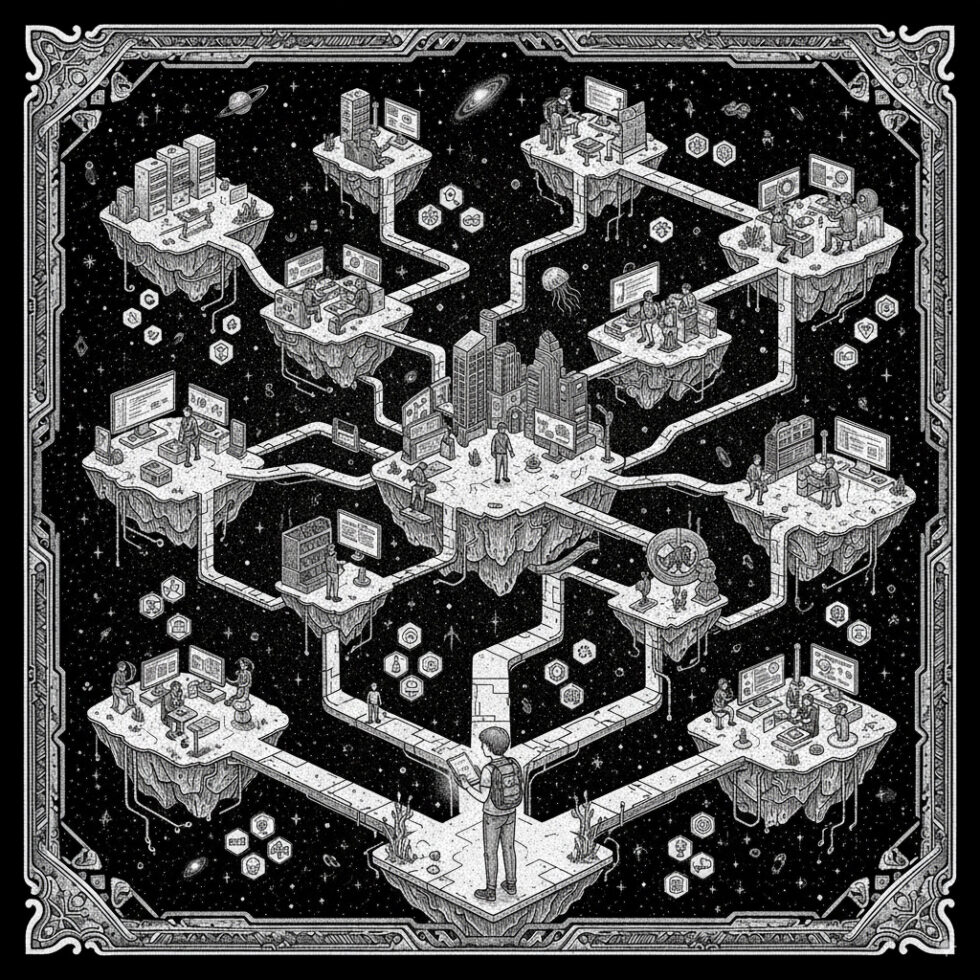
Picking what to learn in tech can feel like running after a bus that’s already turning the corner. New tools land every month. Job posts change their buzzwords every quarter. Yet some choices age well. The best ones compound. They tie into many problems, and they make you faster every day. This article lays out a clear, practical map of what to learn now as an IT worker, why each choice pays off, and how to stitch the pieces together into projects you can show.
How to choose: durable, adjacent, portable
Before we dive into specific technologies, set a filter. Aim for skills with three traits:
- Durable: The core ideas have stayed valuable for years. Think SQL, HTTP, version control.
- Adjacent: They unlock nearby skills with low extra effort. Learn Docker, and Kubernetes comes next.
- Portable: They travel across vendors and domains. Your knowledge works on any cloud, any team.
Use this test every time a new framework or tool catches your eye. If it hits two out of three, it is usually a solid bet. If it hits all three, move it to the top of your list.
The foundations that anchor everything
Strong foundations make every advanced skill easier. They are also quick wins you can apply tomorrow.
Networking basics you actually use
- TCP/IP and ports: How connections open, close, and fail under load.
- DNS: Hostnames, TTL, and why propagation can be slow.
- HTTP/2 and HTTP/3 (QUIC): Multiplexing, head-of-line blocking, and when to prefer gRPC.
Why it matters: You will debug a slow API or a flaky service sooner than later. Knowing where to look saves hours.
Linux fluency and the shell
Get comfortable with bash or zsh, processes, permissions, networking tools, and basic systemd. Use containers for repeatable dev setups. Pick up Git beyond the basics: rebase, bisect, and worktrees.
SQL as your universal toolkit
SQL is the one language that unlocks value in almost every project. Learn joins, window functions, indexes, and query plans. Treat it like a craft. It pays off in data engineering, backend work, analytics, and even AI retrieval pipelines.
Languages that compound: pick a pairing
Most IT workers benefit from a two-language strategy: one versatile scripting language and one compiled language.
Python: glue, data, automation
Python gives you speed in scripting, APIs, DevOps, and data work. Focus on modern practices: pipx, venv, poetry or uv, typing with mypy, and pytest. Build CLI tools, ETL scripts, and small web services. It is also your fastest path into ML and orchestration.
TypeScript: the safer web and API layer
TypeScript turns the JavaScript ecosystem into a safer system. Learn it for frontend work, server code via Node or Deno, and shared types in API contracts. It pairs well with modern frameworks but stay framework-light: focus on DOM fundamentals, Fetch, Web APIs, and build tooling.
Go: simple concurrency and cloud-native tools
Go is the default language for many cloud and infra tools. It’s ideal for network services, CLIs, platform work, and microservices. Learn goroutines, channels, contexts, testing, and the standard library before any frameworks. If your role leans toward ops, platform, or backend performance, Go is a safe bet.
Rust (optional but high leverage)
Rust rewards deep investment. It gives control, safety, and performance. If you work near systems, security, or performance-critical paths (edge proxies, data engines, IoT), Rust is worth your time. Learn ownership, lifetimes, and async. It will change how you think about memory and APIs.
Cloud, containers, and the platform layer
Most teams now ship on top of containers and managed cloud primitives. Even if you aren’t a platform engineer, basic fluency here pays off.
Containers you trust
- Build minimal images: Multi-stage builds, distroless bases, non-root users.
- Scan and sign: Image scanning, SBOMs, and signing builds.
- Local parity: Use docker compose to replicate production dependencies.
Kubernetes without the overwhelm
You do not need to be a cluster wizard to extract value. Learn core resources: Pod, Deployment, Service, Ingress, ConfigMap, Secret. Understand readiness vs. liveness probes, and basics of RBAC. Practice blue-green or canary rollouts. That gets you 80% of the benefits.
Infrastructure as Code (IaC)
IaC turns environments into repeatable, testable artifacts. Learn Terraform or Pulumi. Modularize resources, parameterize through variables, and add CI checks for drift. Pair IaC with GitOps via Argo CD or Flux for safer rollouts and easier rollbacks.
Serverless for glue, not everything
Functions as a Service are great for event triggers, data transformations, and scheduled jobs. Keep functions small, stateless, and well-observed. Use managed queues and retries to absorb spikes. Avoid long-running compute unless the platform is designed for it.
Data engineering you’ll actually apply
Data work shows up everywhere. You do not need to become a full-time data engineer to add value, but you should speak the language.
Warehouse and lake basics, vendor-neutral
- SQL on columnar formats: Parquet and Arrow fundamentals.
- Data modeling: Star vs. snowflake, slowly changing dimensions, partitioning.
- Orchestration: Airflow or Prefect for reliable pipelines with retries and scheduling.
Learn to design tables with query patterns in mind. Measure performance with query plans and partition pruning. Write data tests at the edge: verify schemas and null rates before loading.
Streaming is not rare anymore
Many systems now require timely data. Learn the basics of an event log and consumer groups. Practice with Kafka or a compatible system. Understand exactly-once semantics, and when at-least-once is good enough. For processing, try Flink or Kafka Streams to compute aggregates and joins in motion.
Data contracts and schema evolution
Adopt a contract-first approach with Avro or Protobuf. Enforce back-compat rules. Version topics, and introduce breaking changes with a plan: dual-write, backfill, cutover. This one discipline prevents many late-night incidents.
Practical AI every IT worker can learn
AI has moved into ordinary workflows. You do not need to train large models to deliver value. Focus on applied tasks that pair well with your software and data skills.
Retrieval-first AI
Most useful systems today read your data and answer questions. Learn embeddings, vector search, and Retrieval-Augmented Generation (RAG). Store vectors in a vector database or in PostgreSQL via pgvector. Build a retrieval stack with chunking, metadata filters, and re-ranking. The key is evaluation: define test sets, measure precision, and monitor drift as your content changes.
Small models, big value
Favor models that run within your latency, privacy, and budget constraints. Sometimes that means a hosted LLM; sometimes a small on-device model. Either way, add guardrails: input validation, prompt templates, and output checks. Log prompts and responses, and redact sensitive data.
MLOps light
Even simple models need lifecycle management. Use a model registry (MLflow works well), track versions and metadata, and define promotion rules from staging to production. Monitor for data drift and feedback loops; degrade gracefully when confidence is low.
Security as a default stance
Security is no longer a specialty you can ignore. Fold it into your daily work. The goal is to make the secure thing the easy thing.
Identity-first thinking
Use OIDC and OAuth 2.0 for auth and delegated access. Prefer short-lived tokens and enforce MFA for admins. Separate roles clearly, and audit access. A strong identity layer simplifies everything else.
Secrets, keys, and config
Store secrets in a managed vault or KMS. Rotate on a schedule. Never bake secrets into images or configs. Use parameter stores and per-environment overlays. Log access to secrets, and alert on anomalies.
Supply chain and policy
- SCA and SAST: Scan dependencies and code for known risks.
- SBOMs and signing: Generate an SBOM and sign builds. Verify in the deployment pipeline.
- Policy as code: Use OPA/Rego to enforce rules on images, pods, and network.
This is the heart of ZeroTrustOps: every action must prove itself. Every artifact must be verifiable. The payoff is fewer surprises in production.
Observability and reliability, not guesswork
When systems scale, intuition alone fails. Observability gives you the facts you need to act fast.
OpenTelemetry as the backbone
Instrument services for metrics, logs, and traces using OpenTelemetry. Export to your preferred backend. Use exemplars to link metrics to traces. Capture spans at key boundaries: network calls, database queries, and queue publishes.
Metrics that matter
Track SLOs using user-centered SLIs: availability, latency, and correctness. Define error budgets and treat them as real constraints. Use service dashboards for trends; use traces for one-off hunts. Write runbooks with clear steps and escalation paths.
Chaos and incident practice
Run game days. Practice dependency failures, slow caches, and expired certificates. After incidents, write blameless retros with actions you actually do. Small, consistent improvements beat heroic fixes.
Privacy by design, not by retrofit
Privacy is now a product requirement. Even basic systems handle personal data. Bake privacy into architecture:
- Minimize: Collect only what you need. Drop or mask early.
- Separate: Split identifiers from content. Use keyed hashes for lookups.
- Control: Implement access checks at the data layer. Log reads of sensitive fields.
- Delete: Build deletion into normal flows. Simulate requests to verify.
These habits reduce risk and improve trust. They also make audits smoother and cheaper.
Collaboration habits that scale your impact
Tools matter, but your habits determine how far those tools take you.
- Docs as code: Keep READMEs, runbooks, and Architecture Decision Records in the repo.
- Design reviews: Share small design docs. Invite feedback early.
- Code reviews that teach: Ask questions, add context, and link to docs. Keep a checklist to avoid nitpicks.
Great teams grow through writing and review. You can start that change.
Your personal lab: projects that show the whole stack
Hands-on work is the fastest way to learn. Build a “thin slice” product that touches multiple layers. Here is a sample project that fits in a few weekends and demonstrates real skills.
Project idea: incident knowledge service
Build a small service where teammates submit incident notes. The system stores them and can answer questions like “Have we seen this error before?”
- Backend: Go or Python API with REST and one gRPC endpoint for internal use.
- Data: PostgreSQL with a strict schema; a topic for incident events; a job that extracts embeddings and updates a vector index.
- AI: RAG pipeline using pgvector, with prompts that cite sources and confidence scores.
- Infra: Dockerized services, Terraform for cloud resources, GitOps deployment to a small Kubernetes cluster.
- Security: OIDC login, role-based access, signed container images, and policy checks.
- Observability: OpenTelemetry tracing, Prometheus metrics, alerts on ingest lag and query latency.
This one project proves you can design, build, secure, and operate a realistic system. It showcases PlatformEngineering thinking and DataCentricAI skills without boiling the ocean.
Role-based learning playlists
Different roles emphasize different stacks. Use these as focused starting points.
Platform engineer
- Go, shell, Git internals
- Containers, Kubernetes core objects, operators at a glance
- Terraform or Pulumi; GitOps with Argo CD
- OpenTelemetry, Prometheus, Grafana; SLOs
- SBOMs, image signing, OPA policies
Backend or full-stack engineer
- TypeScript and one framework; REST and gRPC
- SQL mastery; caching patterns; message queues
- Testing strategy: unit, contract, and load tests
- CI/CD pipelines; feature flags; progressive delivery
- Basic RAG pipeline for product search or support
Data or ML engineer
- Python, SQL, and a typed workflow: Pydantic or attrs
- Airflow or Prefect; data contracts; schema registries
- Parquet/Arrow; warehouse modeling; cost-aware queries
- Kafka fundamentals; stream processing
- MLflow; embedding stores; evaluation and monitoring
Security engineer (or security-minded generalist)
- Identity: OAuth 2.0, OIDC; short-lived credentials
- KMS, Vault; key rotation; envelope encryption
- Supply chain: SBOM, signing, verification gates
- Threat modeling, OWASP Top 10; secure defaults
- Policy as code with OPA/Rego
Site reliability engineer
- SLO design, error budgets, and incident management
- OpenTelemetry instrumentation; PromQL fluency
- Capacity planning; load testing; caching layers
- Resilience: queues, timeouts, backoff, circuit breakers
- Game days and chaos experiments within guardrails
Certifications: when they help and when they don’t
Certifications do not replace projects, but they can create interview opportunities and validate a baseline. Choose ones that align with your daily work. A targeted pick like a Kubernetes admin cert, a cloud associate-level cert, or a security foundation cert can be a multiplier. Then pair it with a public project that proves you can use the skill.
A simple 30/60/90 learning plan
Days 1–30: establish foundations and a repo
- Pick your language pairing (e.g., Python + Go).
- Review networking, Git fluency, and SQL fundamentals.
- Containerize a tiny service; add health checks and logs.
- Start a public repo for your lab and write a living README.
Days 31–60: build the thin slice
- Add a database with migrations and a message queue.
- Stand up IaC and a small Kubernetes cluster (local or cloud).
- Instrument with OpenTelemetry; ship traces and metrics.
- Add basic auth with OIDC and lock down secrets.
Days 61–90: add AI, polish, and reliability
- Build a RAG endpoint; evaluate with a small test set.
- Set SLOs and alerts; run a failure game day.
- Generate an SBOM, sign images, and enforce a policy.
- Write a short design doc and a postmortem from your game day.
At the end of 90 days, you will have a system worth showing in interviews and a foundation for deeper learning.
Common traps and how to avoid them
- Chasing frameworks: Learn the web platform and protocols first. Frameworks change.
- Skipping tests: You move faster with tests. Start with contract tests for APIs and schemas.
- Collector mentality: Tools do not add up if they do not integrate. Ship a project.
- Ignoring cost: Practice cost-aware design. Use budgets and alerts even on small labs.
- Keeping learning private: Write short notes, publish tiny demos, and ask for feedback.
Why these picks beat the hype cycle
The technologies in this map share two properties: they are close to the user or close to the system’s core. SQL and HTTP will be with us for decades. Containers and IaC have become the standard unit of deployment. Streaming patterns reflect how real businesses operate. Identity, observability, and policy control let teams move fast without breaking trust. And applied AI tied to your own data is where most value appears first.
Combined, they make you a multiplier. You can design a service end to end, automate its infra, make it secure by default, observe it in production, and extract intelligence from its data. That is what hiring managers look for. That is how your work compounds.
Summary:
- Pick skills that are durable, adjacent, and portable; use this filter before adopting new tools.
- Master foundations: networking basics, Linux and shell, Git fluency, and SQL.
- Adopt a two-language strategy: Python or TypeScript for speed, plus Go or Rust for performance.
- Build on containers, Kubernetes basics, and Infrastructure as Code with GitOps.
- Learn practical data engineering: columnar formats, orchestration, streaming, and data contracts.
- Apply AI where it counts: retrieval, evaluation, and small-model guardrails, with light MLOps.
- Bake in security: identity-first design, secrets management, SBOMs, signing, and policy-as-code.
- Use OpenTelemetry, SLOs, and incident practice for reliable systems.
- Ship a thin-slice project that shows end-to-end skills; document everything.
- Follow a simple 30/60/90 plan to turn study into a portfolio and measurable progress.
External References:
- Kubernetes Documentation
- Terraform Documentation
- OpenTelemetry Documentation
- Prometheus Overview
- Grafana Documentation
- HTTP Working Group Specifications
- PostgreSQL Documentation
- Apache Kafka Documentation
- Apache Flink Documentation
- MLflow Documentation
- OAuth 2.0 Overview
- OWASP Top Ten
- Sigstore Documentation
- Open Policy Agent Documentation
- NIST Zero Trust Architecture (SP 800-207)





